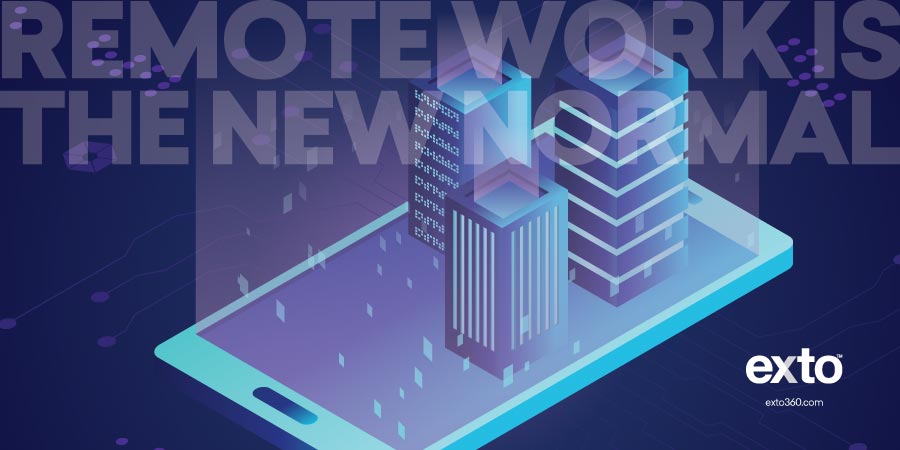Overcoming Construction Skill Scarcity with Technology
Construction skill scarcity has become a major issue across the entire industry. Finding workers in trades and in management, many of whom began their careers working in the trades, can take an exceptionally long time, with no guarantee of finding capable candidates.
In The Next Normal in Construction, McKinsey noted that construction is the biggest industry in the world, and yet it is not performing as well as other industries. Their survey of construction executives revealed issues like low customer satisfaction, lack of digitization, and skill scarcity. While awareness of these issues is not new, the increase in concern among those surveyed is a real eye opener. Perhaps the industry is finally acknowledging that these issues are real, and, to survive and thrive, these issues must be addressed quickly.
The McKinsey survey found that 87 percent of respondents believe that a lack of skilled-labor scarcity is a dire issue for the industry, and almost 50 percent of respondents expect that it will become an exponentially larger issue over the next two decades.
An old-west adage said there were two types of gunslingers: the quick and the dead. The same principle applies to construction firms: some firms are quick to adopt technologies to help them adapt to the changing landscape, and some are stagnant, dying, or dead. Fortunately, technology is helping the construction industry overcome skill scarcity.
Technology Opens Doors to Skilled Construction Talent
Often, skill scarcity is associated with crew members, but not all construction employees spend their days at construction sites. In fact, many never visit the projects they manage. Many employees do not build; rather, they manage the construction process and oversee critical details including inspections, equipment and material delivery, and bill of materials review. Operations staff manage the efficient sharing of information between owners, contractors, subcontractors.
Unable to find a construction project manager in Detroit, Michigan? Hire one from Nowhere, Colorado. (Yes, it is a real place.)
Is one of your best supervisors moving to be closer to her relatives? Congratulate her and tell her she can easily remain a key part of your team from her new home.
Is jobsite access difficult or even prohibited due to COVID-19? Restrictions are not an issue for remote workers. And neither is the chance of contracting or spreading the virus.
With Technology, Remote Work is the New Normal
Not every construction firm is equipped for significant remote work. Tools to collaborate and oversee projects remotely are needed by many firms. The good news is that these tools have been available in some form for years, and some can be implemented quickly. For many organizations, the pandemic has accelerated technology adoption, pushing team leaders outside of their legacy comfort zones. Exposure risks have decreased, and technology dabblers have become power users.

Reduce Construction Skill Scarcity by Choosing the Right Tool
A pair of pliers might do in a pinch to turn a nut, but a wrench is a better choice. Even so, it would still be foolish not to include pliers in your toolbox. That tool selection may seem obvious, but the same thing happens with technology. Construction firms get so used to tool work arounds that they do not seek out the best tools designed specifically for the problems they need to solve.
Construction firms can ask themselves, “with our current technology, from anywhere can we easily:
- Store important documents and photos?
- Streamline collaboration and communication?
- Manage project finances?
- Analyze physical progress?
- Track billing?
- Predict future tasks?
- Create forecasts?
- Identify potential issues and generate recovery plans?
- Unite business intelligence across data sources?
- Present information via intuitive, real-time project dashboards and daily reports?”
Even if your organization can accomplish these tasks with legacy tools, your team may be able to significantly increase accuracy and efficiency by exploring new technology options.
Hitting Milestones = Getting Paid
The right toolset helps construction firms achieve milestones, the same milestones that define how and when payment is collected. If criteria are not met, payment is not made.
Graphs, dashboards, and photo archives are great, but they are not the pivotal reason to upgrade to a new solution. Factors to consider include:
- Will it allow us to do more with fewer people?
- Will it help us hit milestones that improve cash flow?
- Will it help demonstrate value that improves customer satisfaction and loyalty?
- Will it provide a clearer picture of where my firm is making or losing money: by job or labor category or company-specific criteria?
- Will it allow us to track physical and financial progress?
Consider a Solution that Meets Best-of-Breed Criteria
The best project management platforms are cloud-based and designed to leverage the power of remote work. Ideally, a technology platform and services infrastructure bundled with an integration footprint will transform the way your construction firm monitors projects. And some solutions can even be up and running in 15 days!
Skills scarcity is a challenge, but it can be overcome with the right tools and technology.
Adopt a Cloud Construction Solution for Remote Skilled Talent
Given the significant remote work benefits of a PMIS cloud solution, construction firms can quickly adapt to the new normal. The right implementation partner can review current systems, analyze processes, and identify gaps so that a PMIS cloud solution is the best fit for your organization.
Contact us today or review the brochure to learn how we can help you quickly implement Exto (in as little as 15 days) to begin your skilled construction talent journey.

